Tree ranita, small pretty ranita
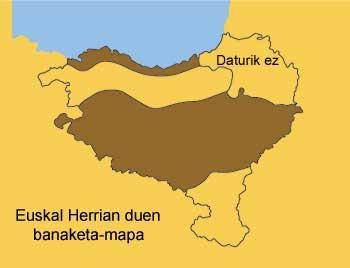
When talking about frogs and toads, in people in general, disgust and dislike predominate. And no wonder! They are so cold, humid, conflicting and great! But just know the arboreal frog (Hyla arborea), these feelings move away quickly, since this rare frog is one of the most elegant and slender of the amphibians of our country: of small size, of vivid color, dressed of soft skin, wet and clean. But in addition to the beauty shown at first glance, the tree ranita has other virtues if it is immersed in its biology and life.
It is known that frogs, in general, are animals with a high degree of adaptation to the terrible life, with ability to make big jumps thanks to the long back legs and the boats. But in the case of tree frogs, specialization in jumps is more important: Like the rest of the amures that have been classified in the Hylidae family, the arboreal frog with clustering paths at the end of each finger to better maintain the substrate. And, as its name indicates, this small ranita is adapted to live in humid environments or near them in trees, bridges and bushes. Therefore, not on the ground, and especially among branches and branches, almost always.
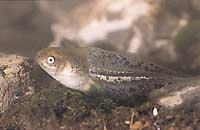
In any case, the colonization of vegetation on the adjacent banks or areas presents a more serious problem than the mobility system, and it is necessary to invent ways of protection against predators. For this reason, inserts in the epidermia of the tree ranita, and like in many other anurs, venomous glands appear that secrete toxic substances for most predators. And therefore, if an enemy run over the unseen frog, it should be immediately detached from the irritation caused by poison.
In any case, it is preferable not to find enemies, and for this reason, the coloration of these frogs is usually disruptive and cryptic, since their ability to take the same color as the substrate makes them invisible. However, the color changes of the frog do not always depend on the substrate and the factors that affect it can be many: fear, humor, variations of humidity or temperature, color of the sky, etc. And from there it comes to this singular ranita, among other things because it has been considered as a natural barometer. For all that said, and although the normal thing is that they are green, it is easy to find frogs of brown, gray, milked, almost white or black trees and also blue.
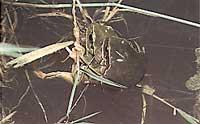
As has already been mentioned, these characteristics of the ranita are understood as an adaptation to life on land, but this does not mean, of course, that it has completely overcome the dependence of water. Not much less! On the contrary, this eccentric frog, like the rest of amphibians, has enough problems to maintain the degree of humidity of its interior environment, with a serious risk of dehydration. However, to deal with this problem, and as an ethological adaptation, the activity of the ranita extends from the afternoon to the early morning, not being visible during the day, except in time of zeal. Stuck in some branch or leaf, the eyes are semi-closed between the evening and the wrapped body, trying to show the smallest possible surface to the action of dry air.
At night, when the relative humidity is high, it moves from the branch to the branch and, dedicating its entire surface to the humid air, recovers the lost water during the day, while catching and eating mosquitoes and insects from eleven different species. Among its dams stand out diptera, lepidoptera, dentials and other soft invertebrates, which also eats ants and fears.
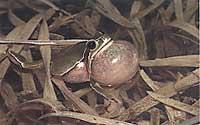
Before April, or when the time is slightly tempered, the winter candlestick is left and the tree frogs "dress" elegantly, ahead of the females, approaching wells, streams and any type of water ball. The colors of the neck nozzle are reinforced at this time, with dark brown and purple hues. In the case of the tree ranita, the casquilla is unique and is located at the bottom of the lower jaws of the mouth. Thanks to the elastic surface that composes it, this structure forms a powerful harmonic box that allows to hear aloud the song of the tree frog during the months of April and May.
Although in some places this song is considered as a sign of rain, as for tree frogs, at least it has two very prominent functions. In fact, the song is the warning call of the tree ranita, so in addition to indicating that the females are male, it serves to vindicate the others the territoriality, since each male delimits its enclosure through the singing. Therefore, sexual competition among males is channeled through the voice.
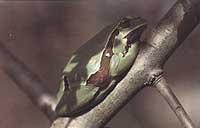
The reproduction occurs in the water: the tree frog rises on the female and, thanks to its nuptial excrements inside the hands, it holds it firmly on the back of the arms, performing a position called ampliexo axial. In this position, it helps the female to lay her eggs already developed. And as the eggs go abroad, they fecundate with the sperm secreted by the male.
These eggs will take about two weeks to hatch, and another three months in the whims that are born, so that they can grow, metamorphosis and leave to dry land.
Only a few of the hundreds of eggs laid by the female will come to complete the whole process; as occurs in most other amuros, in the case of tree frogs, mortality in eggs and larvae is very high. However, the few specimens able to overcome the hard selection will not return to land in three or four years, until reaching sexual maturity.
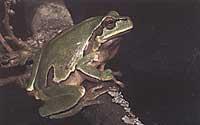
This amphibian of paleoarctic origin is very widespread in Europe, especially in France, Central Europe, Italy and the Balkans. The north limit of distribution is to the south of Sweden and to the east in the Caucasus and the Urals. As for the Iberian peninsula, in the centre and north you can find practically everywhere, in the absence of the south and the east.
In Euskal Herria, however, the distribution of the ranita is divided into two large regions: it is a species that is usually found in the Mediterranean region, from the water distribution line to the Ebro. However, it is not located in the south of Navarre, due to lack of adequate habitat. On the other hand, on the coast, if there are several solid populations in Bizkaia and Gipuzkoa, and it does not expand further inland, it seems that it does not have a healthy wet environment.
Technical details RANITA Species: Hyla arboreaFamily: Monthly order: Anonymous Class: Amphibians amphibians and amphibians |
Buletina
Bidali zure helbide elektronikoa eta jaso asteroko buletina zure sarrera-ontzian











